Hello everyone, I’m Gab, and I want to welcome you to our corner of stories and adventures. Here, together with my good friend Luc, I will share with you stories of our travels around the world. From the bustling streets of Manila to the serenity of the Chilean mountains, we have lived moments that have marked our lives.
Each entry in this blog is a passport to unique experiences, shared laughter and some unexpected reflections. Join us on this journey not only between cities and borders, but through the cultures and people that make each destination unforgettable.
Get ready to immerse yourself in our anecdotes, where reality sometimes surpasses fiction and each story is a window to a fascinating world!
Country vs Nation and UN’s numbers
In our travels, Luc and I have had endless debates about the difference between ‘country’ and ‘nation’. It may seem like a minor detail, but when you’re traveling the world, these concepts take on a profound meaning.
A ‘country’ usually refers to a political entity with its own borders and government. However, a ‘nation’ is more of a cultural and ethnic concept. For example, think of Scotland: it is part of the United Kingdom (country), but it is also considered a nation because of its distinctive culture and history.
Moreover, UN numbers often shed an interesting light on these concepts. According to their statistics, there are 195 recognized sovereign countries. But if we talk about nations, the figure can be much higher, because it includes peoples without a state of their own.
This debate has led us to appreciate more the cultural and political diversity of the world. It has taught us to look beyond the borders on the map, and to understand the histories and people that make up each ‘nation’ within a ‘country’.
Kuwait and Its Oil Fields

If there is one thing that really impressed me about Kuwait, apart from its rich culture and hospitality, it was its vast oil fields. Luc and I had the unique opportunity to visit some of these sites, an experience that changed our perspective on the global energy industry.
Kuwait is known for being one of the largest oil producers in the world. Seeing the drilling rigs up close and the gas flames burning on the horizon, we understood the magnitude of this industry. The way these oil fields stretch as far as the eye can see is simply breathtaking.
What also struck me was how this wealth of resources has shaped Kuwait’s economy and society. From the modern city of Kuwait to the ancient traditions that are still preserved, oil has had a profound impact on almost every aspect of life in this country.
This visit was not only a physical journey, but also a journey of learning about how natural resources can shape a country and its place on the world stage.
Exploring Kuwait City

After our visit to the oil fields, Luc and I immersed ourselves in the heart of Kuwait: its vibrant capital city. Kuwait City is a fascinating mix of modernity and tradition, a place where skyscrapers merge with the rich cultural heritage of the Middle East.
The first thing that struck us was the impressive architecture. The iconic Kuwait Towers, with its futuristic design, offers a panoramic view of the city and the Persian Gulf. But it’s not just the modernity that stands out; the traditional souks, such as the famous Souk Al-Mubarakiya, transported us to a world of authentic flavors, colors and sounds.
Exploring the city also meant discovering its culture and people. We visited several museums, such as the Kuwait National Museum and the Tareq Rajab Museum, where we learned about the history and art of the region. The hospitality of the people of Kuwait was simply warm and welcoming, which made our experience even more memorable.
Kuwait City is a place where the past and present are uniquely intertwined, offering its visitors a rich and diverse experience. Without a doubt, it is a city that deserves to be explored and appreciated in all its complexity.
Unusual Experience in Bahrain
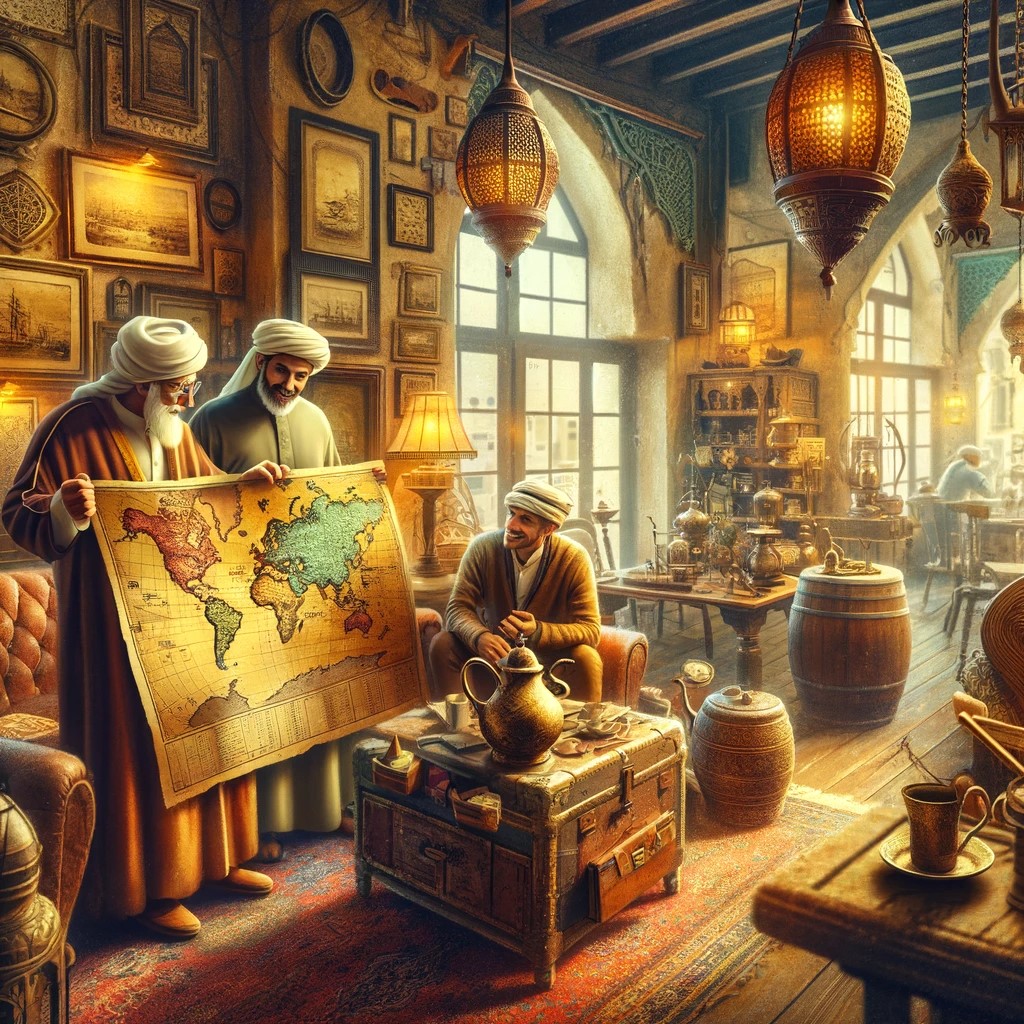
One of the most unusual and memorable experiences Luc and I had was in Bahrain. This small island kingdom in the Persian Gulf is known for its mix of modernity and tradition, but what happened to us there was something completely out of the ordinary.
While exploring the narrow streets of Manama, the capital, we came across a small cafe that looked like something out of a novel. Upon entering, we were greeted by an elderly man who turned out to be a passionate collector of historical artifacts. His collection ranged from ancient Arabic coins to rare editions of books.
Most surprising was when he showed us an ancient map that, according to him, pointed to the location of a hidden treasure somewhere in Bahrain. Although it was probably just a legend, the idea of hidden treasure in this modern country captivated us.
This experience reminded us that sometimes the greatest treasures in our travels are not the places we visit, but the stories and people we meet along the way.
A Weird Bar Experience in Tangier, Morocco
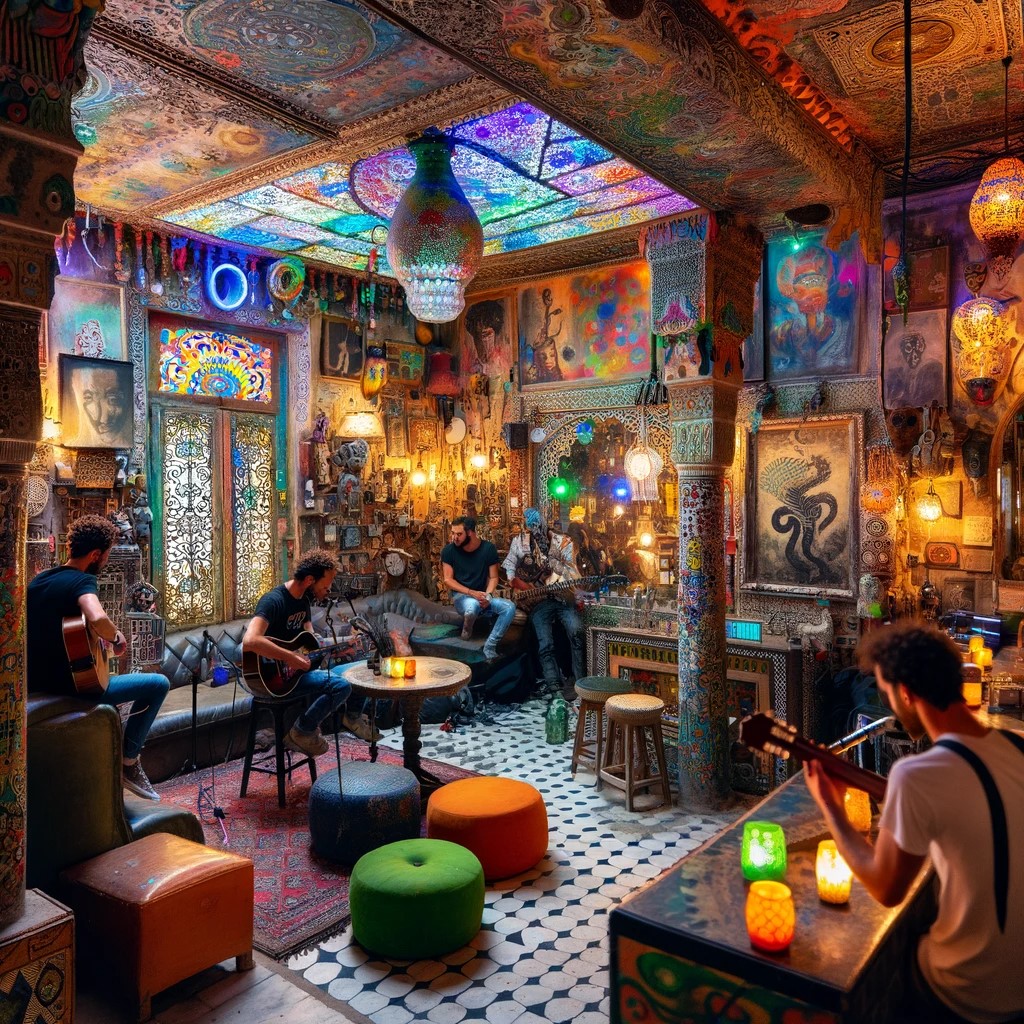
When Luc and I visited Tangier, Morocco, we expected to immerse ourselves in its rich culture and history. However, one night while exploring the city, we came across a bar experience that was, to put it mildly, quite unusual.
We decided to enter a bar that seemed to have a lively atmosphere. But as soon as we stepped foot inside, we realized it was no ordinary bar. The decor was an eclectic mix of pop art and traditional Moroccan elements. The strangest thing was the entertainment: a group of musicians played a fusion of jazz and traditional Moroccan music, while a local artist performed a kind of live performance art.
The experience was surreal. Between the music, the art and the mix of patrons, both locals and tourists, the place had an almost magical atmosphere. This night in Tangier taught us that sometimes the strangest experiences can also be the most enriching and memorable.
Bahrain is the place to go for drinking

In our travels, Luc and I have discovered that every place has its own essence when night falls. Bahrain, despite its compact size, surprised us with an unexpectedly vibrant night scene, especially when it comes to bars and nightlife.
Unlike many other countries in the Middle East, Bahrain has a more liberal attitude towards alcohol. This is reflected in its many bars and nightclubs, which offer a wide variety of experiences, from elegant rooftop lounges to lively Irish pubs.
On one particular night, we visited a rooftop bar with panoramic views of the illuminated city. The combination of an excellent selection of drinks, live music and a relaxed, yet sophisticated atmosphere made for a memorable experience.
Bahrain may be small in size, but it is big in terms of hospitality and nightlife fun. If you are looking for an exciting night out in the Persian Gulf, Bahrain is definitely the place to go.
Questioning border divisions…
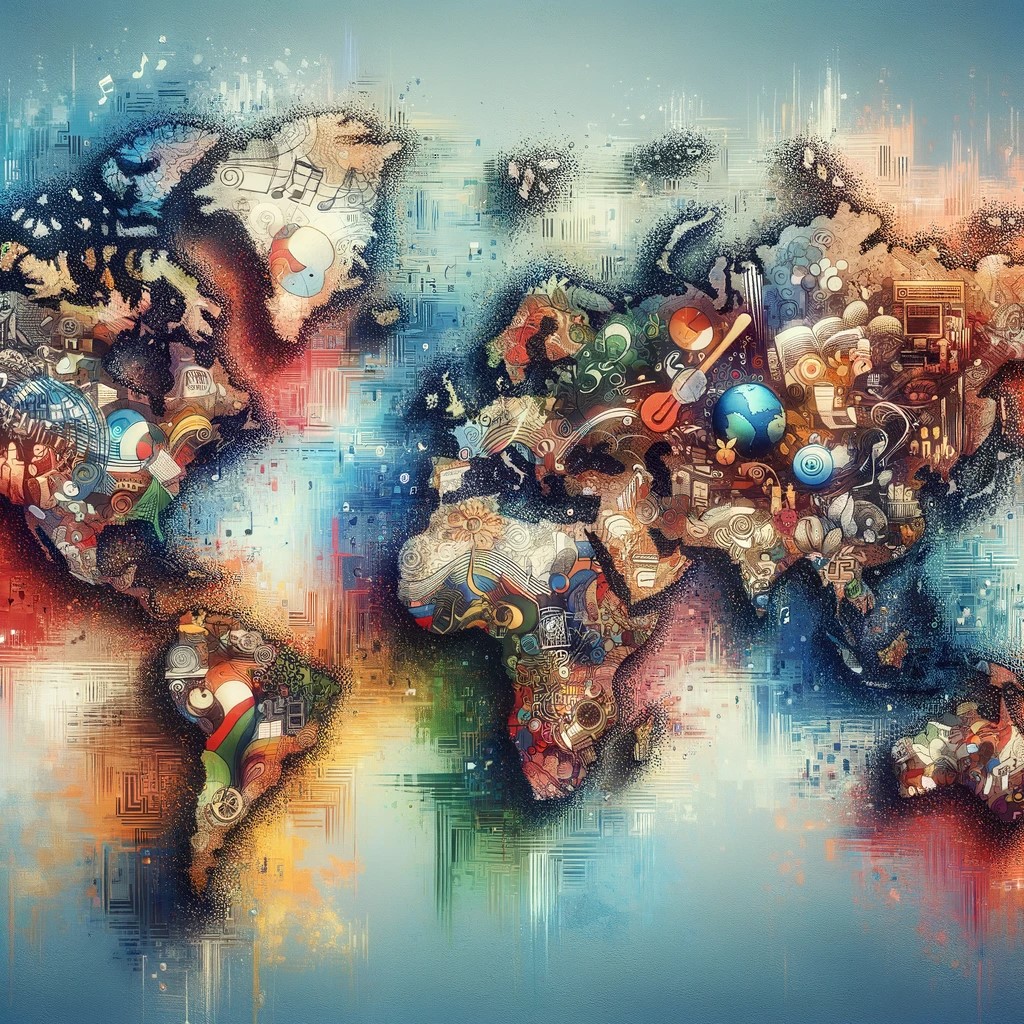
During our adventures, Luc and I have crossed countless borders, both visible and invisible. This constant crossing has led us to reflect deeply on the idea of borders and how they divide our world.
On one particular trip, as we moved between countries with intertwined histories and cultures, we asked ourselves: what do these divisions really mean? Borders, often arbitrary and drawn by historical conflicts or political interests, may appear permanent on maps, but in reality, they are more fluid and complex.
We have seen how people and cultures transcend these divisions, creating a mosaic of identities that do not always conform to the lines on a map. Food, music, language, even daily traditions, are often shared and mixed in these border areas, defying the notion of clear separation.
These experiences have taught us to look beyond physical borders and appreciate the rich diversity that emerges when different worlds meet and intertwine.
Missing Entry Stamp in Chile
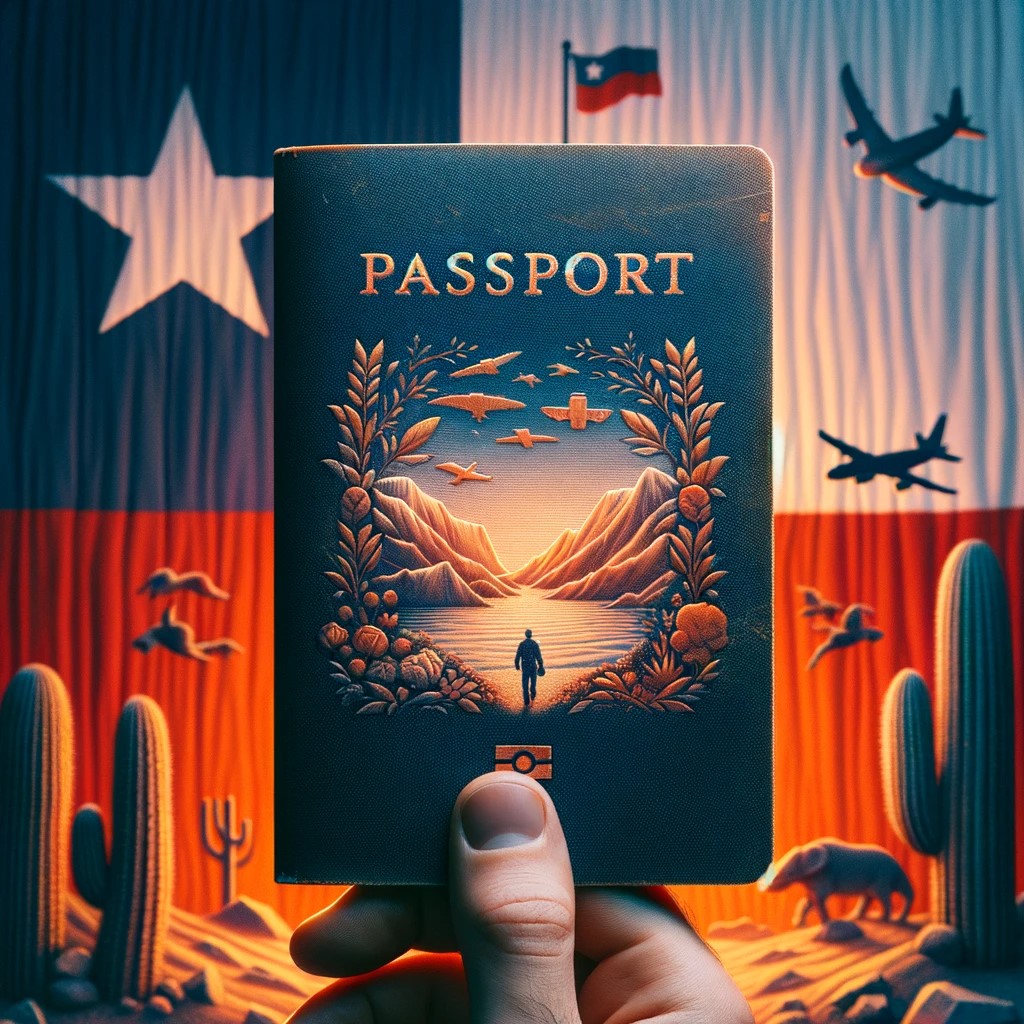
During our travels, Luc and I have learned that not all unforeseen events are bad, but some can definitely cause a bit of stress. In Chile, we encountered an unexpected setback involving nothing less than a missing entry stamp in our passports.
Upon arriving in Chile, we were so excited to explore that we barely paid attention to the immigration procedures. It wasn’t until days later, when we were about to board an internal flight, that we realized our passports were missing the entry stamp.
The initial panic was followed by a series of visits to government offices and a lot of explaining. Fortunately, the Chileans showed us extraordinary kindness and understanding. Finally, we got the necessary stamps, but not before learning a valuable lesson: always check your passport after going through immigration!
This little incident not only added an interesting anecdote to our trip, but also showed us the human and understanding side of the Chilean authorities, something we will always remember with gratitude.
The Darien Gab in Panama and the Inmigrant Oddysee
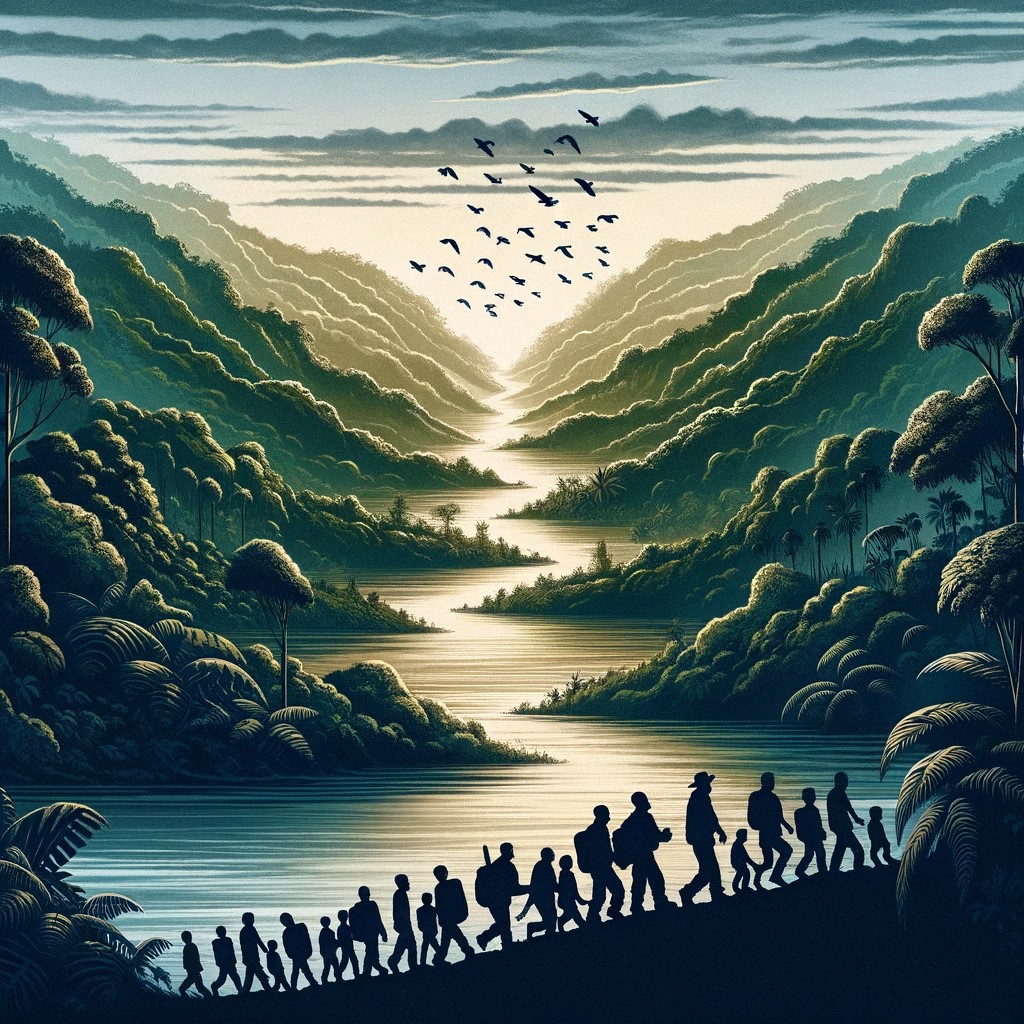
On our trip through Central America, Luc and I faced one of the most challenging and eye-opening stretches: the Darien Gap in Panama. This stretch of dense jungle and swamps between Panama and Colombia is known to be one of the most inaccessible places in the Americas.
But beyond being a physical barrier, the Darien Gap is also a silent witness to the odyssey of countless immigrants. In our passage through this region, we encountered stories of courage and resilience, people who cross this hostile territory in search of a better life.
We were deeply moved by these stories. The determination and hope we saw in the eyes of these travelers, despite the dangers and challenges, gave us a whole new perspective on the phenomenon of immigration. They reminded us that, beyond the numbers and the headlines, there are human stories full of dreams and struggles.
The Darien Gap is not just a geographic location; it is a symbol of the barriers that many people must overcome in their search for a better future.
La Bestia in Mexico

On our journey through Mexico, Luc and I came face to face with a reality that many immigrants face: the journey on ‘La Bestia’ (The Beast). ‘La Bestia’ is not a monster of legends, but a freight train that runs through Mexico, known to be one of the most dangerous routes that migrants use to reach the United States.
Watching people board this moving train, risking everything for the promise of a better life, was an experience that left us speechless. The determination and bravery of these travelers was palpable in the air, each with their own story, dreams and fears.
Despite the dangers, ‘The Beast’ represents for many an escape route from poverty or violence. It is a route full of uncertainties, but also of hope. This experience opened our eyes to the difficult decisions that many must make and the human resilience in the most adverse circumstances.
Questiomimg border control and Bureaucracy
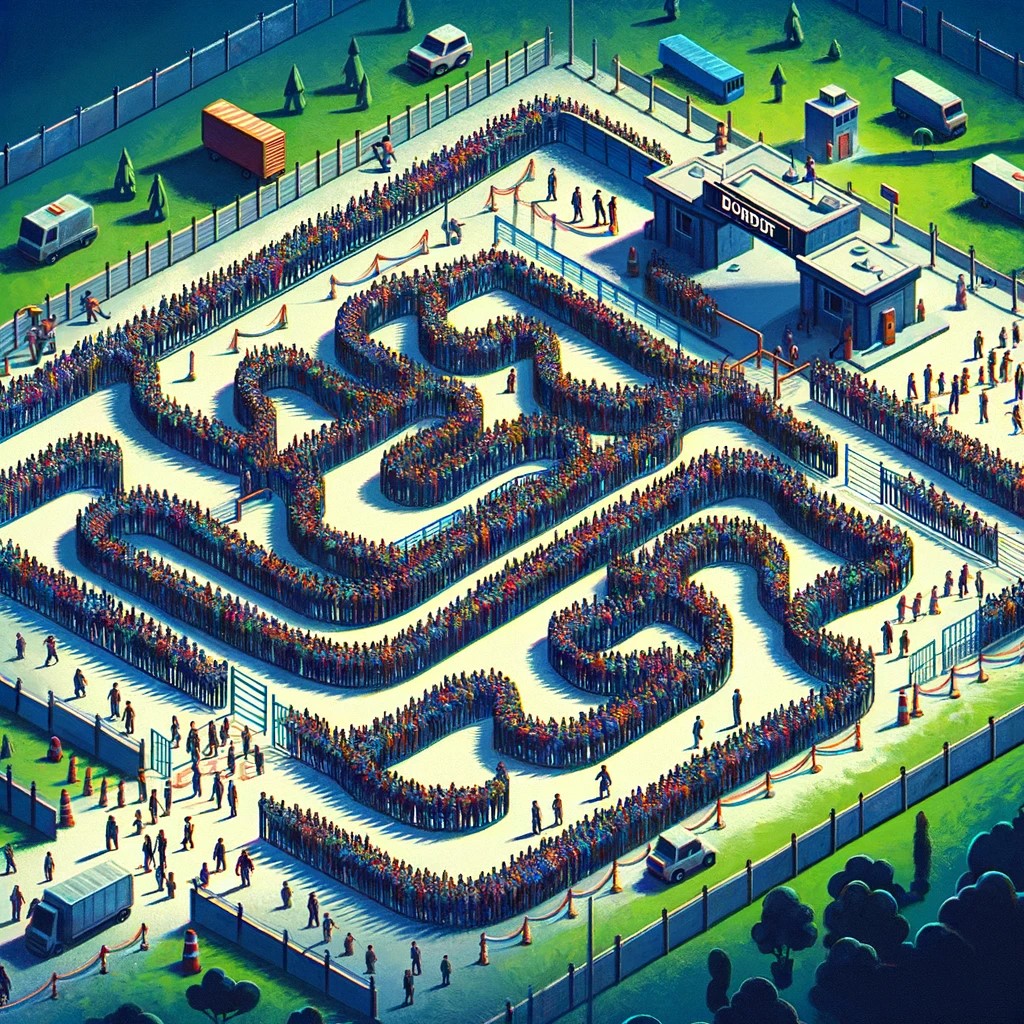
In our travels, Luc and I have passed through countless border controls and navigated the labyrinth of international bureaucracy. These experiences have led us to reflect on the role and effectiveness of border control and bureaucracy in the modern world.
While crossing a particularly difficult border, we encountered long queues, confusing procedures and an apparent lack of efficiency. This made us wonder: do these processes really serve their intended purpose, or are they mere formalities that often get in the way of human connection and understanding?
In addition, we saw how bureaucracy can affect people disproportionately, especially those fleeing difficult situations. The rigidity of rules and processes sometimes seems to ignore the human realities behind each passport or form.
These reflections have led us to question the nature of borders and bureaucracy in an increasingly interconnected world, where human stories are often lost in the sea of paperwork and procedures.
Gab’s first passport
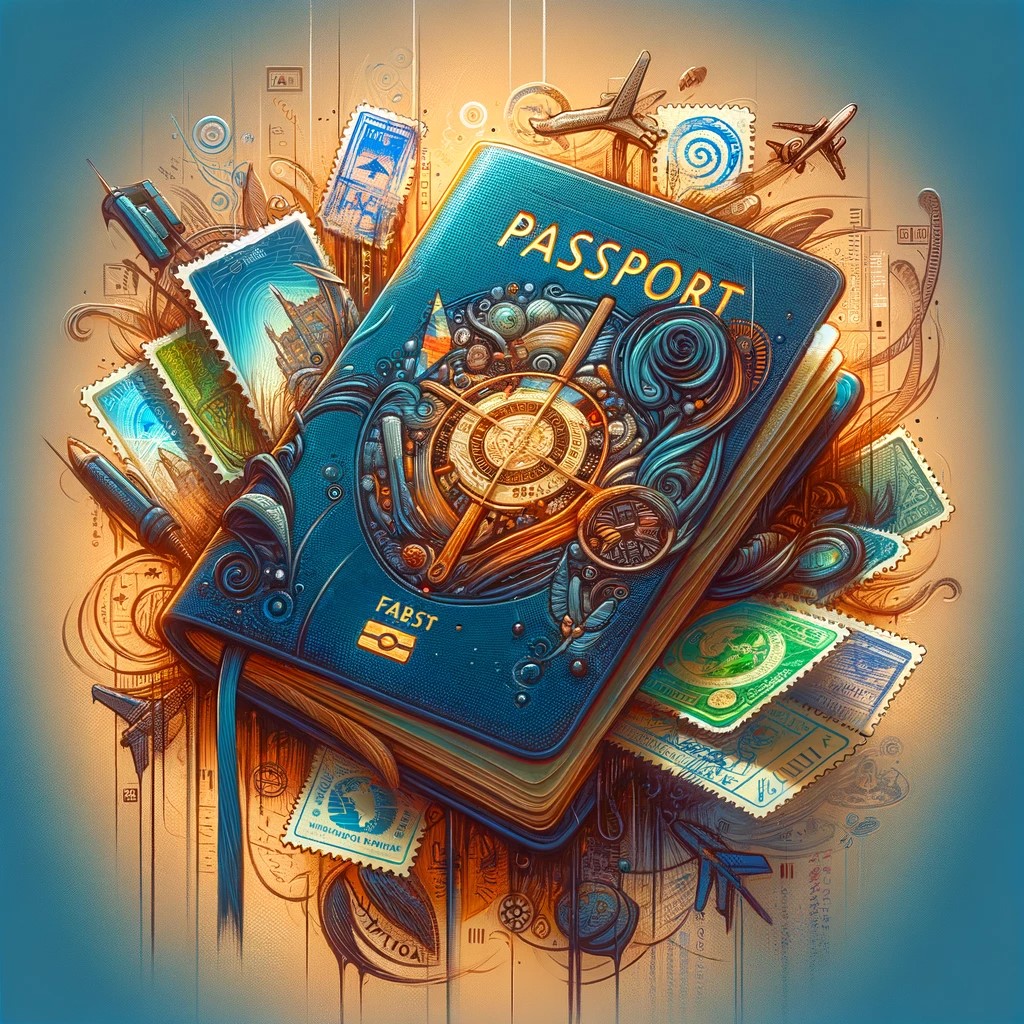
I clearly remember the day I received my first passport. I was a young man full of dreams and anxious to discover the world. That little blue book was not just a document, but the key to endless adventures and experiences.
With each stamp added to its pages, my passport became a travel diary, a chronicle of encounters, discoveries and learning. Since my first departure from the country, each trip has been an opportunity to grow, to see the world from new perspectives and to connect with people from all over the globe.
Looking back, that first passport was much more than a requirement to travel; it was the beginning of my personal transformation. It taught me the importance of being open, adaptable and always curious. Each stamp, each visa, tells the story of a chapter in my life, an indelible memory of my journey around the world.
Conclusion
After traveling so many roads, crossing borders, and living countless adventures with Luc, I stop to reflect on what it means to travel. Beyond destinations, passport stamps or photographs, travel is a journey into oneself.
Every experience, every person we met, and every challenge we faced, transformed us in ways we never imagined. We learned about the diversity of the world, but more importantly, we learned about ourselves: our strengths, our weaknesses, and our infinite capacity to adapt and understand.
Looking ahead, I know there are many more journeys ahead. However, the most meaningful journey of all is the one that still continues within me. Travel is not just an act of moving from one place to another; it is a constant exploration of life, a never-ending quest for knowledge, empathy and connection.
Thank you for joining me on this journey through this blog. I hope that each story, each reflection, has been a window into a wider and deeper world, and that it inspires others to embark on their own journeys, both external and internal.
I invite you to visit my previous post: Let’s Talk About Italy.